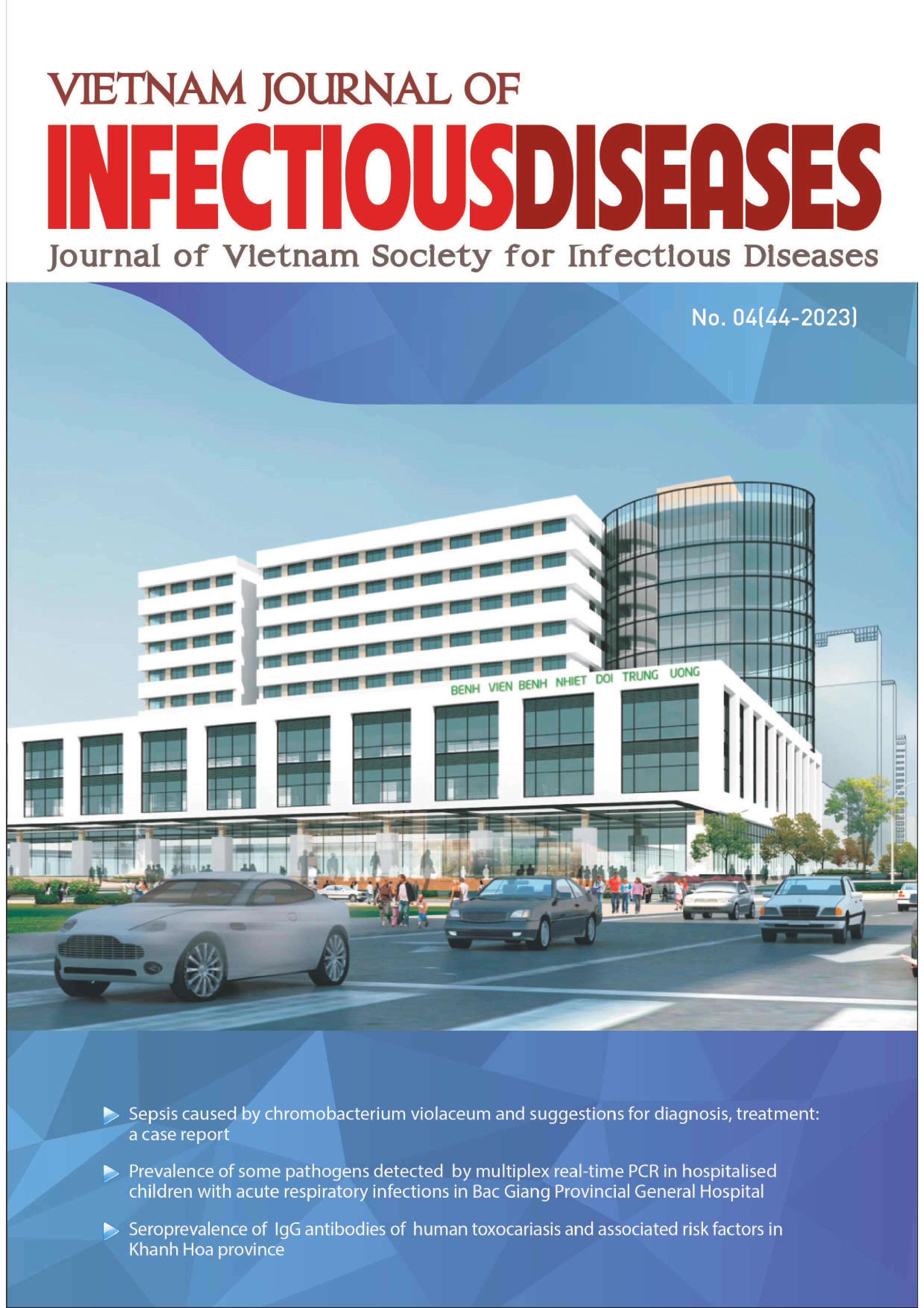CLINICAL AND PARACLINICAL CHARACTERISTICS OF FASCIOLIASIS PATIENTS IN THE PERIOD OF 2019 - 2023
Nội dung chính của bài viết
Tóm tắt
Objectives: To describe the clinical andparaclinical characteristics of Fasciola infected patients .
Subjets and methods: Cross-sectional descriptive study on 128 patients diagnosed with fascioliasis from January 2019 to June 2023 treated at National Hospital for Tropical Diseases and National Institute of Malariology, Parasitology and Entomology.
Results: Clinical symptoms: Right upper quadrant pain accounted for 74.2%, followed by epigastric pain (44.5%), fatigue and loss of appetite (43.8%), weight loss (42.2%), fever (39.8%) and hepatomegaly (7%). Paraclinical findings: Hypereosinophilia accounted for 75%, elevation of AST and ALT accounted for
12.5% and 24.2%, respectively. 91% of patients were positive with anti-fasciola antibodies by ELISA testing, 24% of them had fasciola’s eggs in stool. 100% of patients had liver lesions on ultrasound, of which 62.5% were found in the right liver. The lesions sized from 3 - 5,9 cm in 35.9% and from 6 - 8,9 cm in 38.3% of patients.
Conclusions: Clinical and paraclinical characteristics of patients infected with fascioliasis are very diverse. Diagnosis should be based on the combination of clinical features, hypereosinophilia, fasciola antibodies and ultrasound images.
Chi tiết bài viết
Từ khóa
Fascioliasis, fasciola, clinical, paraclinical
Tài liệu tham khảo
2. Tran Duc Bang. Research on clinical and paraclinical characteristics and treatment results of patients with fascioliasis at the National Hospital for Tropical Diseases 2006-2013. Thesis for specialist doctor level II - Hanoi Medical University. Published online 2013:38-57.
3. Phan Cam Ly, Nguyen Thi Dung BVT. Prevalence of positive anti-Fasciola hepatica serum in humans and associated factors in Hoa Vinh town, Dong Hoa district, Phu Yen province. The journal of Malaria and Parasitic disease control. Published online 2019;3(111):23-28.
4. Nguyen Van De, Nguyen Van Chuong DCT. Evaluating the effects of Triclabendazole in the treatment of fascioliasis in Vietnam. The journal of Malaria and Parasitic disease control. Published online 2005;6:54-61.
5. Nguyen Thu H, Dermauw V, Tran Huy T, et al. Diagnosing Human Fascioliasis Using ELISA Immunoassays at a Tertiary Referral Hospital in Hanoi: A Cross-Sectional Study. Trop Med Infect Dis. 2022;7(5):76. doi:10.3390/tropicalmed7050076
6. Dao Trinh Khanh Ly, Tran Van Huy. Clinical and paraclinical characteristics of patients infected with fascioliasis. Journal of Medicine and Pharmacy.
Published online 2012;2(6):72. doi:10.34071/jmp.2012.6.9.
7. Quan Tran Nam. Clinical, paraclinical and results of treatment of patients with fascioliasis infection at Khanh Hoa tropical disease hospital. Vietnam Journal of Infectious Diseases. 2023;2(42):47-52. doi:10.59873/vjid.v2i42.276
8. Pham Thi Ngan. Evaluation of clinical and paraclinical symptoms of fascioliasis patients treated at the National Insitute of Malariology, Parasitology
and Entomology in 2011. Medical doctor graduation thesis - Hanoi Medical University. Published online 2011:21-35


